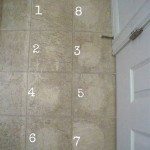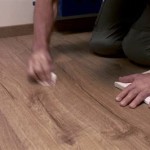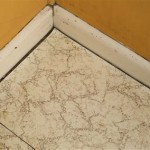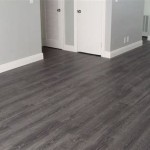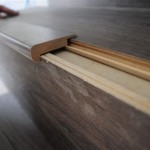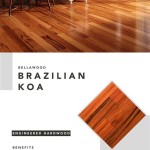Is Cherry Wood Good For Flooring In Kitchens?
Selecting appropriate flooring for a kitchen environment involves careful consideration of several factors. Durability, moisture resistance, maintenance requirements, aesthetics, and cost all play crucial roles in the decision-making process. Cherry wood, known for its rich color and distinctive grain patterns, is often considered as a flooring option. However, its suitability for kitchen use requires a thorough evaluation of its inherent properties and potential drawbacks in a high-traffic, moisture-prone space.
This article aims to provide a comprehensive analysis of cherry wood as a kitchen flooring material, examining its advantages and disadvantages, exploring alternative finishes and treatments to enhance its performance, and comparing it to other popular kitchen flooring choices. Understanding these aspects will empower homeowners and interior designers to make informed decisions regarding the use of cherry wood in kitchen environments.
Understanding the Properties of Cherry Wood
Cherry wood, derived from the American Black Cherry tree (Prunus serotina), is a hardwood valued for its reddish-brown heartwood and smooth, closed grain. Its color deepens and matures over time with exposure to light, adding to its aesthetic appeal. The Janka hardness rating, a measure of a wood's resistance to denting and scratching, is an important indicator of its durability as a flooring material. Cherry wood typically has a Janka rating of around 950, which places it in the mid-range of hardwood options. This means it is softer than options like oak or maple but harder than softer woods like pine.
While its hardness is a factor, other properties influence its suitability for kitchen use. Cherry wood is known for its dimensional stability, meaning it is less prone to warping or shrinking with changes in humidity compared to some other wood species. However, it's still susceptible to moisture damage if not properly protected. The wood's natural resistance to decay and insects is moderate, but it's not immune to these issues, especially in consistently damp conditions.
The cost of cherry wood flooring is generally higher than that of more common hardwoods like oak. This cost is attributable to the slower growth rate of cherry trees and the demand for its distinctive appearance. Furthermore, the availability of specific grades and cuts of cherry wood can also affect the overall price.
Advantages of Cherry Wood Flooring in Kitchens
Despite its inherent limitations, cherry wood flooring offers several advantages that make it a compelling option for certain kitchen designs and lifestyles. Firstly, its aesthetic appeal is undeniable. The warm, reddish-brown tones and unique grain patterns add a touch of elegance and sophistication to any kitchen space. The wood's natural beauty can complement a wide range of cabinet styles and color schemes, creating a visually appealing and inviting atmosphere.
Secondly, cherry wood’s staining properties are excellent. It accepts stains evenly, allowing for customization of the floor's color to match existing décor or personal preferences. A variety of stain options are available, from light and natural shades to darker, more dramatic hues. This versatility allows for a truly personalized flooring solution.
Thirdly, with proper care and maintenance, cherry wood flooring can last for many years. While it's not as durable as some other hardwoods, a well-maintained cherry floor can withstand the daily wear and tear of a kitchen environment. Regular cleaning, refinishing when needed, and preventative measures against moisture damage are essential for preserving its longevity.
Disadvantages of Cherry Wood Flooring in Kitchens
The kitchen, by its very nature, poses several challenges for wood flooring. Moisture from spills, leaks, and humidity is a constant threat. Cherry wood, while dimensionally stable, is still susceptible to water damage. Prolonged exposure to moisture can lead to warping, staining, and the growth of mold and mildew. This is a significant concern in a kitchen environment where water exposure is almost inevitable.
Another disadvantage is cherry wood’s relative softness compared to other hardwood options. While it’s not as soft as pine, it's still more prone to denting and scratching than harder woods like oak or maple. High-traffic areas in the kitchen, such as around the sink or stove, are particularly vulnerable to damage from dropped objects or abrasive materials. This can lead to a gradual degradation of the floor's appearance over time.
The patina, or the color change that occurs with age and light exposure, can be both a benefit and a drawback. While many appreciate the deepening of color as the wood matures, uneven exposure to light can lead to uneven darkening, particularly in areas covered by rugs or furniture. This can create unsightly variations in color across the floor. The need to periodically move rugs and rearrange furniture to ensure even light exposure adds to the maintenance requirements.
Mitigating Risks and Enhancing Performance
Several strategies can be employed to mitigate the risks associated with using cherry wood flooring in a kitchen environment and to enhance its overall performance. The most crucial step is the application of a high-quality, durable finish. Polyurethane finishes, particularly those formulated for floors, provide a protective barrier against moisture and wear. Multiple coats of finish are recommended to ensure adequate protection. Regular reapplication of the finish may be necessary to maintain its effectiveness over time.
Proper subfloor preparation is also crucial. A level, dry, and stable subfloor is essential for ensuring the longevity of any wood flooring, including cherry. A moisture barrier should be installed between the subfloor and the cherry wood flooring to prevent moisture from migrating upwards and damaging the wood. This barrier will help to protect the floor from potential water damage.
Maintaining consistent humidity levels in the kitchen can also help to prevent warping and shrinking. A humidifier or dehumidifier may be needed depending on the climate and the time of year. Consistent humidity will help ensure the dimensional stability of the wood flooring. Immediate cleanup of spills is essential to prevent water from penetrating the wood. Using absorbent mats in high-traffic areas, particularly around the sink and stove, can also help to protect the floor from spills and scratches.
Regular cleaning is also important. Using appropriate cleaning products specifically designed for hardwood floors is crucial. Harsh chemicals and abrasive cleaners should be avoided as they can damage the finish and the wood itself. Dusting or vacuuming regularly will help to remove dirt and debris that can scratch the floor. Refinishing may be necessary every few years to restore the floor's appearance and to provide a fresh protective layer.
Comparing Cherry Wood to Other Kitchen Flooring Options
When considering cherry wood for kitchen flooring, it's important to compare it to other popular alternatives. Hardwood options like oak and maple are generally more durable and resistant to moisture than cherry. Oak has a higher Janka hardness rating and is widely available, making it a more cost-effective choice. Maple is also a durable option with a lighter color that can brighten a kitchen space.
Engineered hardwood is another alternative. It features a layer of real wood veneer bonded to a plywood or fiberboard core. This construction makes it more resistant to moisture and warping than solid hardwood. Engineered cherry wood flooring can provide the aesthetic appeal of solid cherry with improved stability.
Non-wood flooring options, such as tile, vinyl, and laminate, offer greater water resistance and durability. Tile is impervious to water and is available in a wide range of styles and colors. It is a very durable and low-maintenance option. Vinyl flooring is also waterproof and comes in various patterns and textures, including wood-look options. Laminate flooring is a cost-effective alternative that mimics the appearance of wood, but it can be susceptible to water damage if not properly sealed.
The choice between cherry wood and these other options depends on individual priorities and budget. If aesthetics are the primary concern and homeowners are willing to invest in proper maintenance and care, cherry wood can be a beautiful and elegant choice. However, if durability and water resistance are paramount, other options may be more suitable. Considering the lifestyle, budget, and aesthetic preferences of the homeowner is critical in making the right choice.

The Benefits Of Cherry Wood Flooring David Tiftickjian Sons

Wide Plank Wood Flooring In The Kitchen Hull Blog

Cherry Wood Flooring The Choice For Home Elegance

What Colour Of Hardwood Floor With Cherry Cabinets

What Is The Best Hardwood Flooring For Kitchens And Why Impressions Collection

Design Dilemma Decorating With Brazilian Cherry Red Hardwood Flooring Lantern Lane Designs

Are Cherry Wood Cabinets Outdated All Coast Inspections

Choosing A Wide Plank Wood Floor For Your Kitchen Hull Blog

3 4 X 5 Prefinished Solid Clear Grade Brazilian Cherry Flooring

How To Choose A Paint Color Compliment Cherry Cabinets
Related Posts

